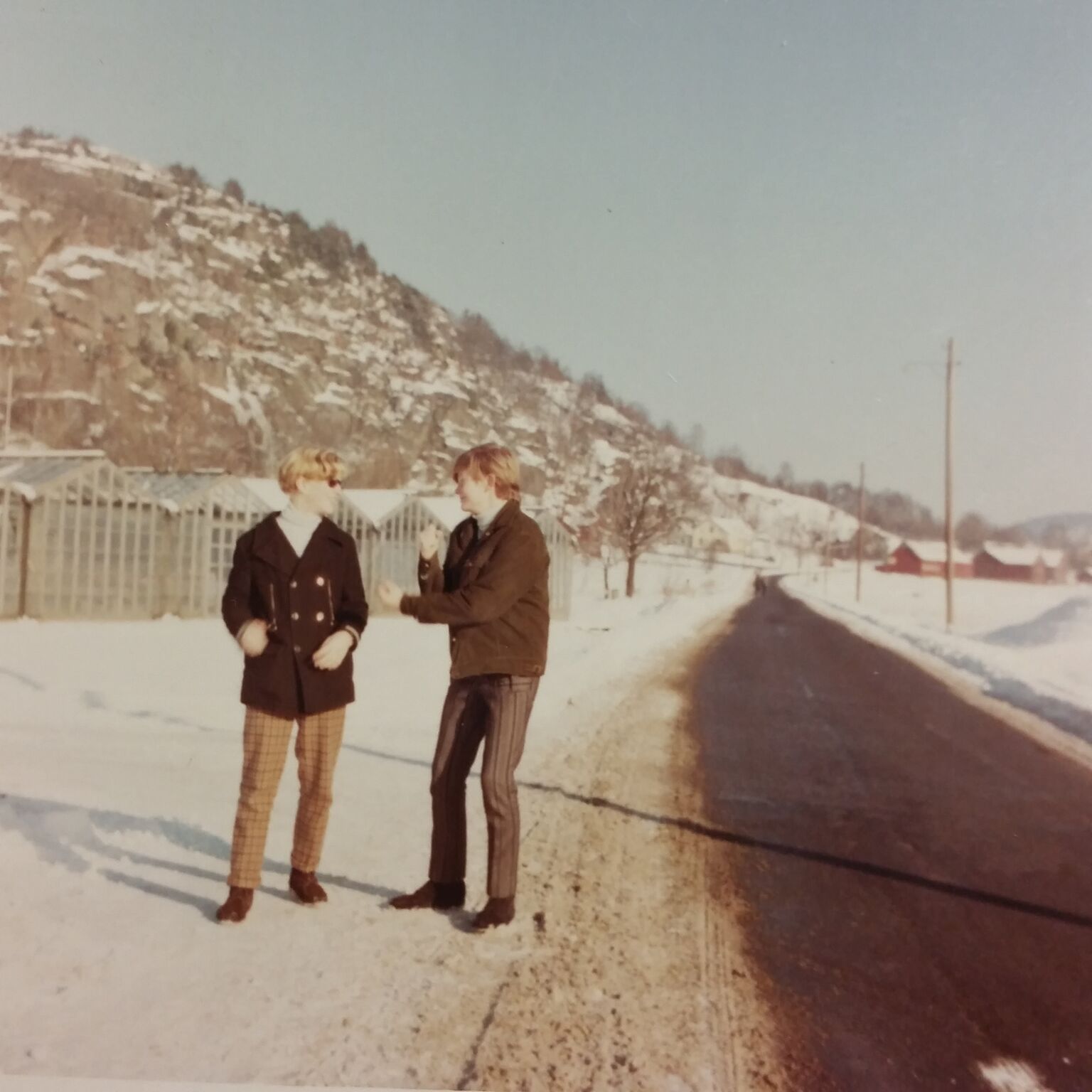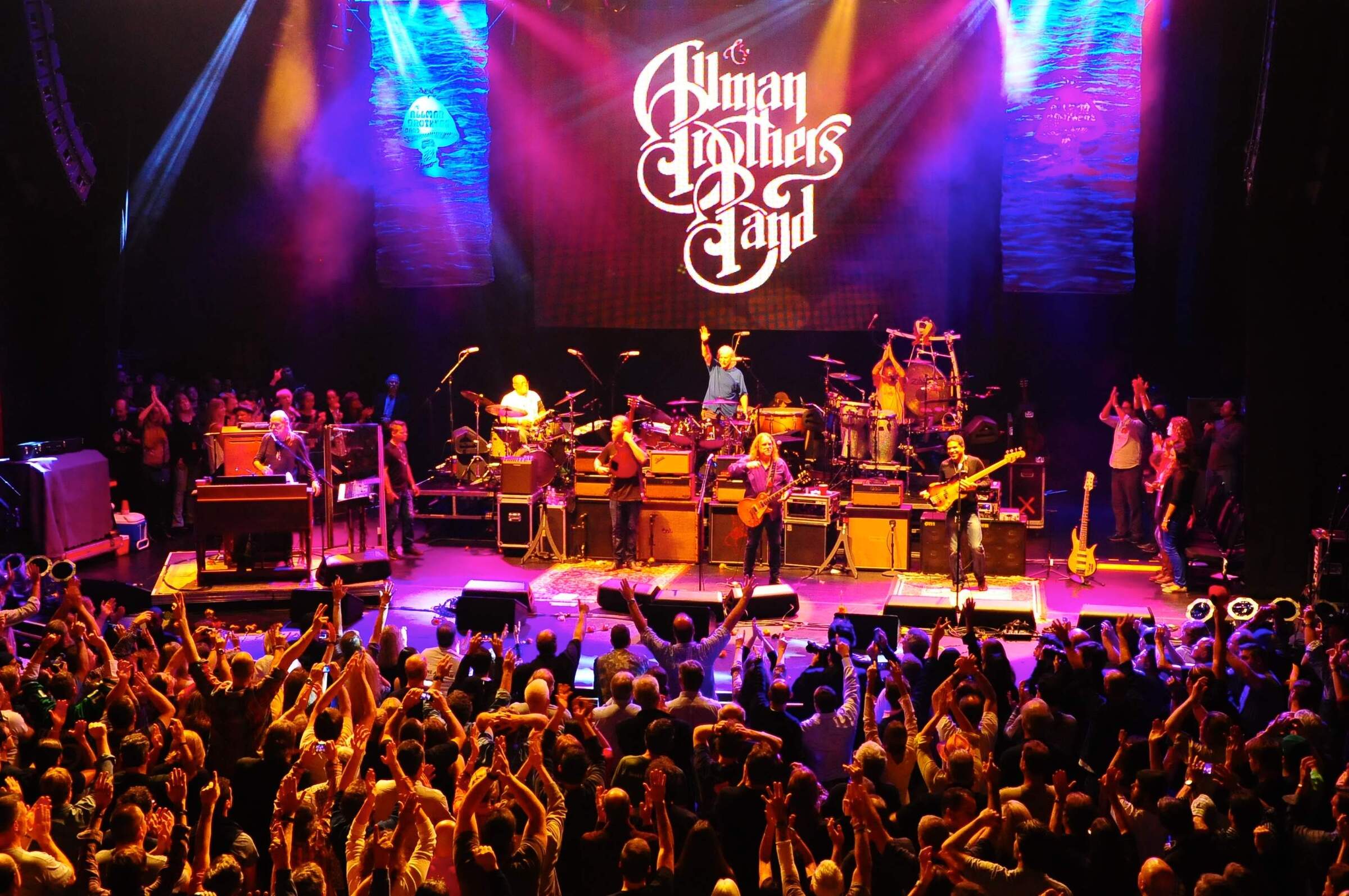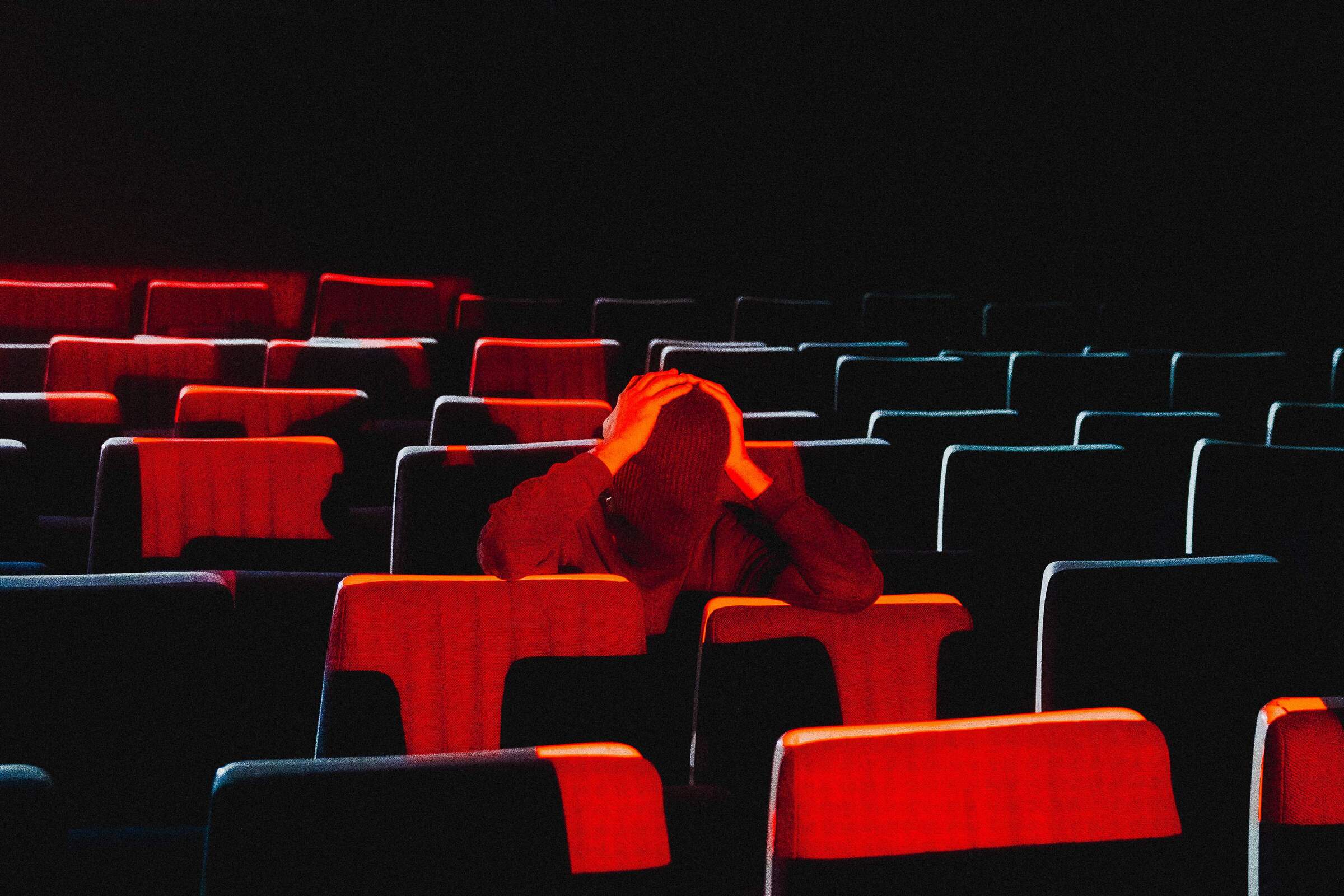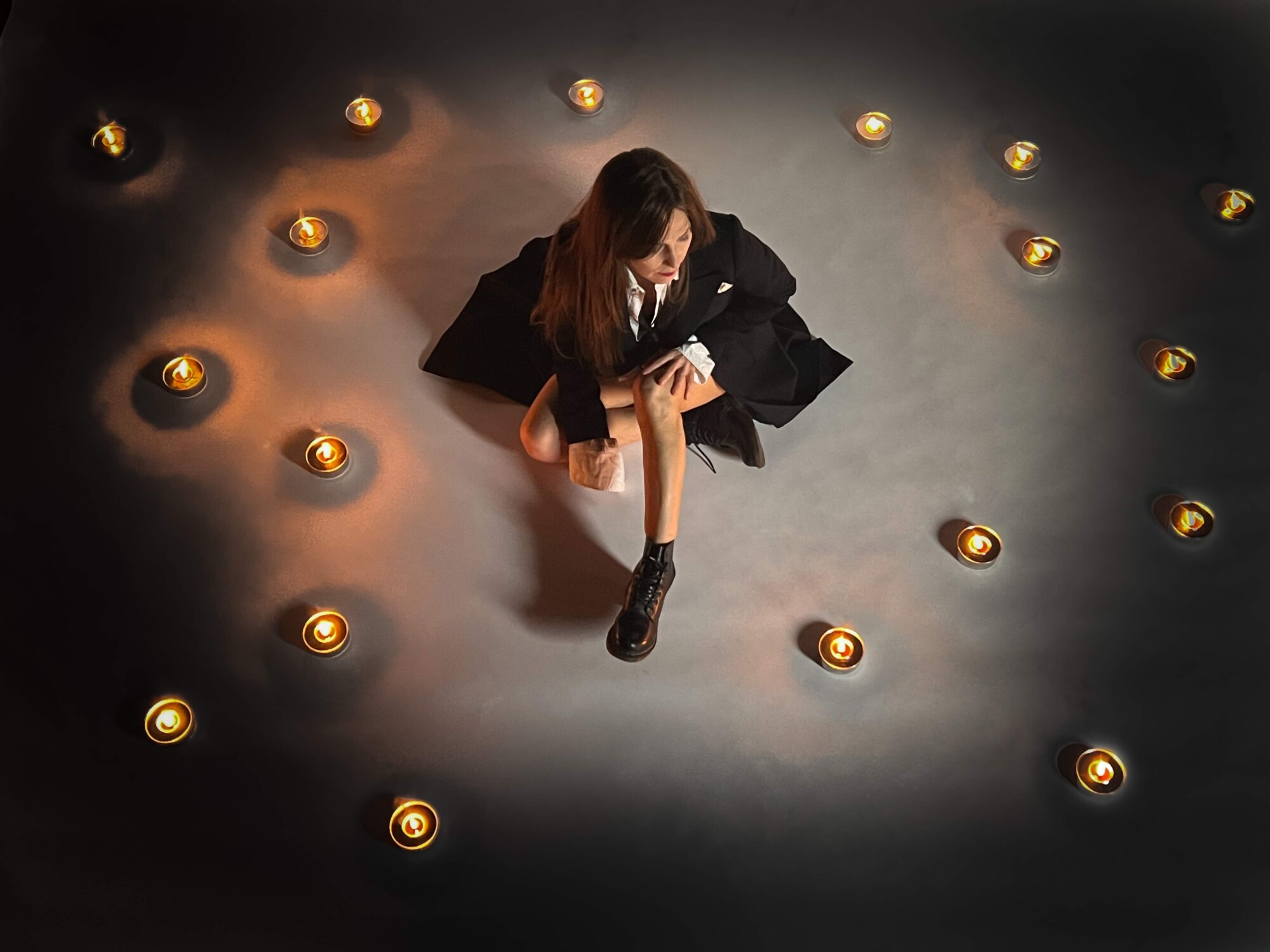Joxfield Projex | Interview | Stefan Ek
Joxfield Projex is a Swedish duo founded in 2005. The two original members Janne Yan Andersson and Stefan Oax Ek made music together in the mid-sixties until mid-seventies and then had a 30 year break before they re-started their music activities as Joxfield ProjeX in 2005.
They refer to themselves as “a little dynamic duo producing avant-whatever music for nice open-minded people”. Stefan Ek and Janne Yan Andersson are also behind Tin Can Music, a label mainly focusing on releasing music by any of them since 2005.
“It always starts with some basic structures to which we improvise”
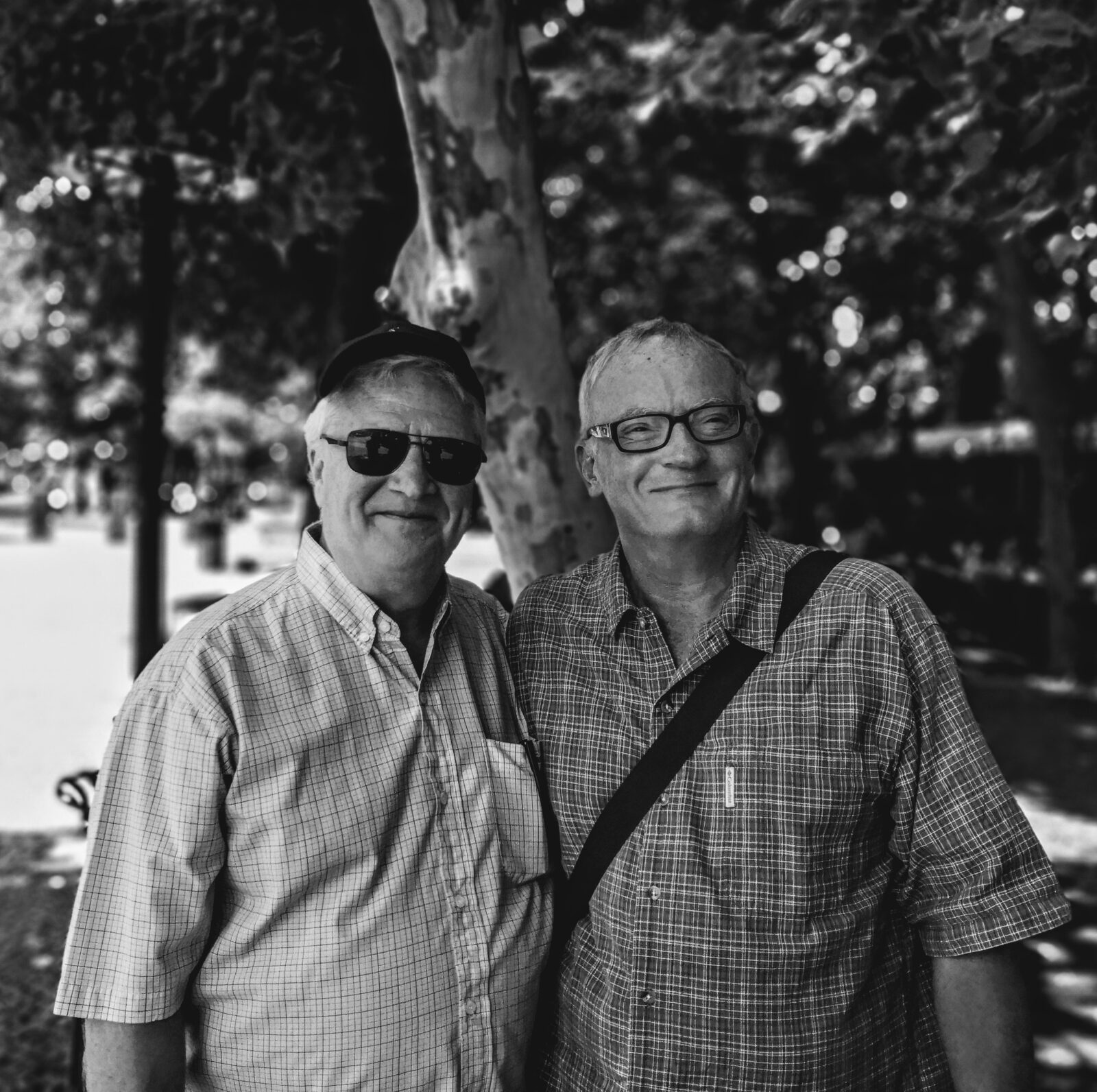
Would you like to talk about your background? How did you first get interested in music?
Stefan Ek: Music has always been of great interest and has always been around since a very young age. Sweden was the very first country in the world to welcome The Beatles outside Great Britain and they made their first non-British live performances here, well documented by public TV and Radio. The British Invasion was here early. There were weekly Top 10 lists on radio with songs you loved. Janne and I met first in the first grade of primary school in Gothenburg in 1961 as 7 years old kids and shortly after that we became best friends. We lived five minutes walk from each other and spent almost all our spare time together, playing around like kids do, but also listening to a lot of music; The Beatles, The Animals, The Rolling Stones, The Hollies, The Who and whatever came after that; American West Coast Flower Power music, psychedelic stuff. We were receptive listeners and especially artists that brought music one step further awoke our interest, like The Yardbirds’ ‘Roger the Engineer’ album, Jimi Hendrix, Pink Floyd (watching Pink Floyd live in our hometown on their ‘Atom Heart Mother’ tour in November 1970 was outer worldly amazing, made impressions beyond belief).
What were some of the very early endeavors in music (pre-Joxfield Projex)?
In 1965 and for a couple of years Janne and I “wrote” music. This means we found melodies in our heads, or took someone else’s old melody, and put our own, simple words to it. No recording equipment and no instruments to play on, just singing, but nevertheless we organized the songs as “singles” with an A and a B side, with handmade covers in two copies.
Between 1965 – Winter 1969/70 we called our duo first DonnoJanne & Maecs, sometimes just DJ&M, and later Don & Mac. Somewhere during that time, we started to learn playing guitar basically and from 1968/69 we started using the guitar as a main tool for making the music, with a self-invented special note system, using numbers for telling where on the strings to put the fingers. I still use that system when writing specific melodies, but with addition of regular notes showing its duration.
In Autumn 1968 we went from unrecorded “singles” to unrecorded “albums”, still with handmade covers in two copies. This went on until the end of Summer 1969 when we both bought a tape recorder each and after that recorded all our music.
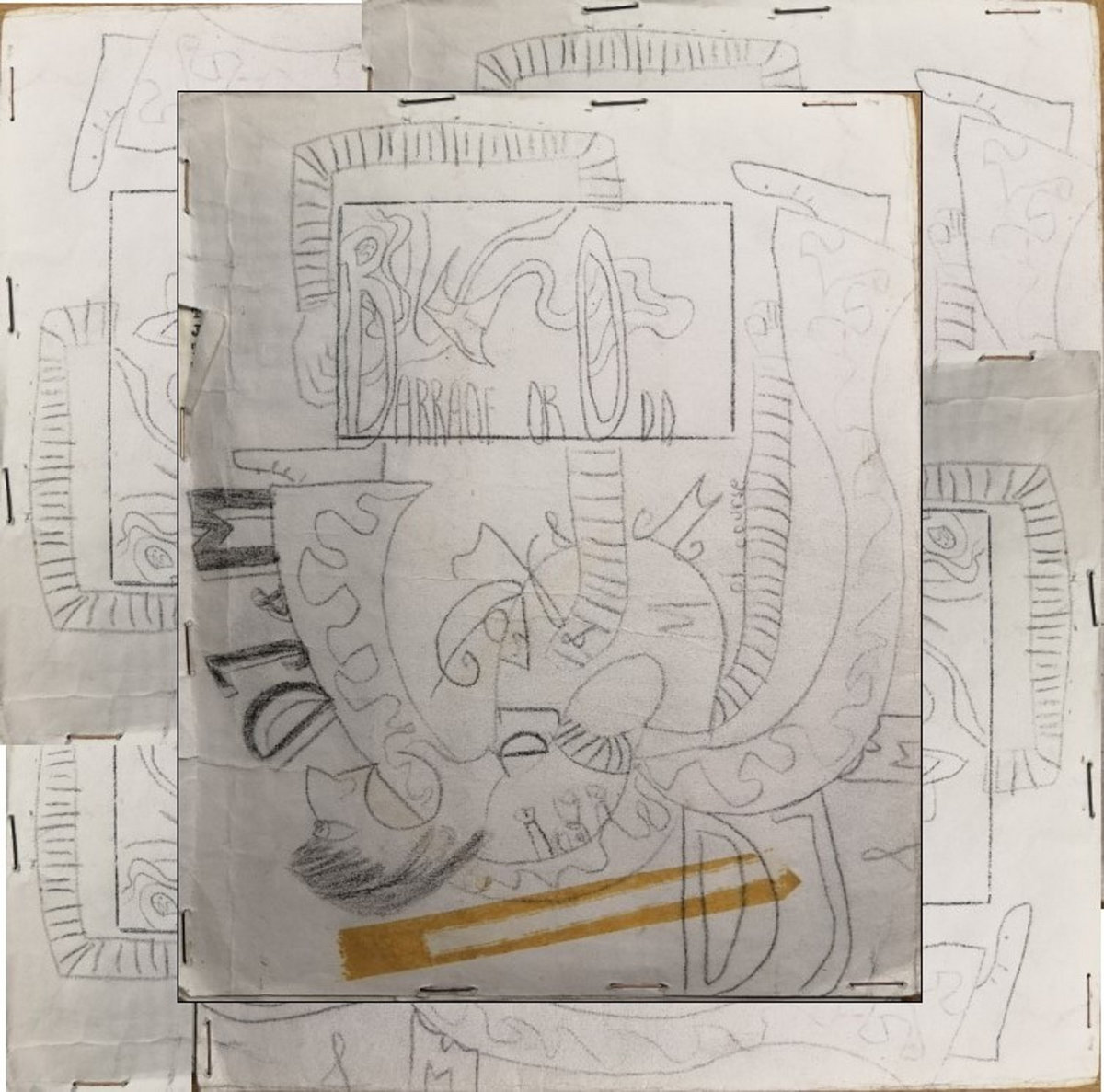
(What could the unrecorded music of DJ&M have sounded like? It was simple but filled with creative ideas. I will ask you to check this link to our Bandcamp site and read the words on “Baroque or Odd” and my interpretation of it exactly 50 years after its original unrecorded making).
In 1968 Janne & Stefan of Joxfield ProjeX had made music together for a couple of years as DJ&M, short for DonnoJanne & Maecs. Simple music just like kids do, but sometimes with an experimental touch. Even though they didn’t have any tape recorders until autumn 1969 they composed and organized albums as if it was for real. Having heard The Beatles’ self-titled “White Album” they were inspired by the concept of doing a double album, which they thus also did. Between December 1968 and February 1969, they wrote the 30 songs that became the DJ&M “virtual” double album ‘Baroque or Odd’. To override The Beatles DJ&M added a four track EP to the double LP. Cover art and various inserts were made in two copies, one each, as usual, but no recording. As usual. Janne had just turned 15, Stefan had four months left before his 15th birthday. Just kids. As The Beatles’ ‘White Album’ celebrated its 50th anniversary November 22, 2018 the idea came up of making a constructive and creative interpretation of the 34 songs of ‘Baroque or Odd’. The music had been written down in a self-invented note system where you could see which note it was, but not its value. You had to memorize the specific melodies. Sheets for 32 of the 34 songs were found in a closet. Most of the melodies were forgotten, but by reading and playing the self-invented note system various parts of the songs could be remembered, recovered and become the starting point of the interpretations of the songs. One of the songs, “Jar”, was a description of a cut-up sampled piece and this way of making music became inspiration for the two lost songs on the album (‘I Am Embittered’ & ‘With A Blue Balloon’). Between late November 2018 and January 2019 recordings, mixing and masters were done. 41 tunes in 85 minutes (the four track EP became five, the last song of the album is in seven parts, all in all 41 tracks). A double LP with an EP. Some kind of experimental progressive pop. As Bandcamp have a short stop between tracks the tracks B4 & B5 here presents as one, as well as the BoO EP’s five tracks is presented as one, and finally the 7 parts of D4 Guinea Pigs Song suite is presented as one single tune. Future physical releases will split these tracks into individual pieces Released on February 7 2019 to celebrate the 50th anniversary of its making.
Summer 1969 – February 1970 we continued doing a lot of albums, now recorded music organized as albums with handmade covers, two copies. The music was melodic (Janne’s) or monotonous, with few notes (mine), mostly played on acoustic guitar (by the composer) and percussion (by the other one), often vocals (composer) and background vocals (the other).
At the end of this initial period more and more improvisations were brought in. From being song based the music became looser. There were sometimes also brought in elements of cut-up techniques, collages, other open-minded experiments, like in one 25 minutes tune, ‘Classtic Man’ we put the recording microphone into the guitar, put the recording level to 11 and hit the guitar repeatedly, a 25-minute distorted noise extravaganza. In another tune, ‘I Belched Out Smoke’, we made the sounds of us pretending to smoke for about 6-7 minutes, just air softly blown into the microphone.
Spring 1970-1972 we started to make music with the addition of another guy, Stefan G, on guitar/bass, background vocals, now calling ourselves The Age. Me and Janne also continued doing a lot of music as a duo, Andersson & Ek. Everything was recorded.
In 1971 Janne bought a Yamaha organ with bass pedals, the songs became longer, sometimes an hour or longer, and more improvised. If there was meant to be singing, I wrote some pretentious lyrics, Janne most often sang, me and Stefan G improvised backup kind-of call-and-response vocals.
In late 1972 Stefan G jumped off, me and Janne continued for a couple of more years as Andersson & Ek, but also as Stefan-Olofs Orkester or Andersson & Ek’s Viscously Cartilage (a five-piece failure of us and a couple of classical trained youngsters who couldn’t cope with our irrational whimsicality).
In 1973 we were stuck with a lot of long organ/drums tunes that didn’t lead anywhere. One exception was ‘Fourth Movement’ of A Strange Symphony, an improvised four track suite which had nothing to do with a symphony, none so ever except for the title. The ‘Fourth Movement’ was recorded when we discovered that when you pressed down two of the C# and D# keys instead of getting a simple chord it was like the two keys battelled to take over the sound picture, it became a terrible irritating whining between the two notes competing, never as a full chord. We put a candlestick to press them down, started the tape recorder and went out to the kitchen for some meal. 19 minutes later we came back and turned off the recorder. We offered friends money if they could hear the whole piece with earphones on regular volume. No one did, they thought it was unbearable. I would love to hear this piece again, maybe sample it. In 2013 & 2014 I recorded a homage to it, ‘Fourth Movement January 7 1973 Replica’ to celebrate its 40th years anniversary with some additional improvised Cotton Casino vocals. It ended up on the compilation ‘Black’ in 2017.
After Summer 1974 we both bought one Sony sound-on-sound tape recorder each and recorded an ambitious psychedelic album with overdubs, which was new to us. This could be the beginning of something new, but instead it became a final chapter for Andersson & Ek even though we recorded our very last tune in Summer 1975, a 16-minutes experimental piece called ‘Cosmic Bananas’-
What happened next was what happens to most people: Life!
Education, work and families. Janne and his wife moved to Stockholm where they still live, close to 500 km from Gothenburg. New professional and social structures, paths leading in different directions away from each other.
Between 1974 – 1984 I recorded a lot of music on my own using the tape recorder’s sound-on-sound system. From having been the mainly lyrics + percussion guy (+ little guitar & bass) with A & E I now took up the guitar for real. Never been good at practicing but by playing along with artist’s records I adored. I did learn a lot, like with Miles Davis ‘Agharta’ and ‘Pangaea’ albums. I made mostly composed stuff, but also a lot of improvisations. In 1984 my tape recorder broke down at the same time as I went out of creative steam for a couple of decades.
I’m kind of an analogue guy, but Janne has always been high tech, receptive and bright with technical stuff. Sometime during this 30 years hiatus period he bought a MIDI keyboard (the organ was broken long ago) and using some simple recording programs on his computer he made some recordings, wanting to find interesting sounds as he later explained it to me.
What sparked the idea to reform and start recording music again?
In the early 90s my job made me go to Stockholm a couple of times a year. We met, reconnected. After a while I used to stay at Janne’s place. I brought mixtapes with music I liked at the time.
With new technologies, computers, recording programs, we talked about what it would be like trying to make some music again, to find out whether we still had creativity hidden within us or not.
In May 2005, we gave it a try, brought instruments and stuff to my country cottage in Dalsland.
With no other rules except the one not to deal with nostalgia or any old shit, we started with a half-finished idea, put some effort into it, found it useless , decided to skip it and improvise instead. I took off with two distorted chords to which Janne put some mean keys chords solo. Our first recorded tune, ‘Hurricane’. One take, no overdubs.
It became an intense week, filled with instant composing and improvising. At almost every moment we both played together at the same time. If there was any overdub needed/wanted, we both added something simultaneously to what had been recorded the previous moment. Almost 100 minutes of music was recorded and ended up as a self-printed 2 CD-r, ‘Dark White House’ the first album on our own Tin Can Music. 20 copies which we gave away to friends and anyone who wanted it.
The name Joxfield ProjeX came out of a folder Janne used to add his recorded music while trying to find interesting sounds. It was taken from the very first tune I wrote on guitar in 1968, ‘Uncle Joxfield’s Start Number’, a name picked in the air. Why not use it as a band name?
We decided to go on, tried some prepared, written stuff and the following 1 ½ years we had three more weeklong sessions, now at Kolpebo in Dalarna County. The result became three albums of which the third was the 3 CD-r-mega album ‘The Pond Intermezzo’. 20 self-printed copies were given away. These sessions were important for developing our approach to the music we wanted to make; it was rough, unpolished, creative, something to go on with, but in another way.
In times of streaming, they have never been digitally released, and probably never will, even though parts of them can be heard as ‘Archives EPs 1 – 7’ on Internet Archive.
We put up some of the music on Myspace with some good reactions, both from people unknown to us but also from other musicians.
I bought a simple recording program which made it possible for me and Janne to exchange files, add stuff into them, back and forth, share the construction and/or pre-preparing of songs.
At this time, early 2007, we played with the idea of bringing in other people to our music. We didn’t want to hire external musicians, tell them what to play. If they liked our music, we wanted them to be creative, use their skills and empty their artistic soul to make it better and more interesting. Full freedom. I asked around amongst our known and unknown Myspace friends, people I thought could add good stuff to our music and was happy to find out how many of them agreed to contribute.
From 2007 this went on for a couple of years and ended up in the free download 3 CD-r set ‘Numbers & Letters’ (the commercial release/not release of it is a story in itself). It included artists like Geoff Leigh (Henry Cow), Pat Mastelotto (King Crimson), Nikke Ström (Swedish legend and the tightest bass player ever) and many more. Early Fairport Convention singerJudy Dyble and Pärson Sound/TG&S drummer Thomas Mera Gartz did also contribute to our music, but for various reasons these tunes didn’t turn up until the ‘Numbers & Letters’ 10th anniversary set ‘Abstract & Concrete’ in 2020.
A lot of the songs changed during process, some of them from being pure improvisations to structured and arranged pieces, like one of my favorites, ‘The Garden of Eden’, first an improvisation by us which Janne structured and reduced (at one time it was 15 minutes long) picked themes forward and we both added beats and sounds. We sent it to Geoff Leigh who returned it filled with brilliantly arranged and played saxes.
Original improvisation:
Final track:
During this period, we also worked with five other albums, all very different from each other, all released as free download albums on Clinical Archives in 2009, at the time one of the biggest net labels. The guy who ran it used to have the idea of only releasing one album by each artist, but he liked us and all in all it became eight releases, a couple of 100000 downloads.
You’ve been active for so long, but I only know your work from 2005 on. Were you part of any bands back in the 70s? Any recordings from that time?
We were never involved in anything outside our own music. We did play with other people within the concept of our music. Between summer 1969 and on everything we did was recorded reel to reel, some 50 – 100 hours I guess, including my own stuff. The music was almost never rehearsed, most often improvised with Janne being the motor. The tapes were always cheap, some of it was over-recorded, but I think most of them are there. But the condition? They have been stored in plastic bags in cold attics. Not for anyone else to listen, but my own curiosity, I would like to see if I could find out if any of it could be saved, not only falling apart in small, fragmented plastic pieces. If there is anything to save, I guess I have just one chance to do it.
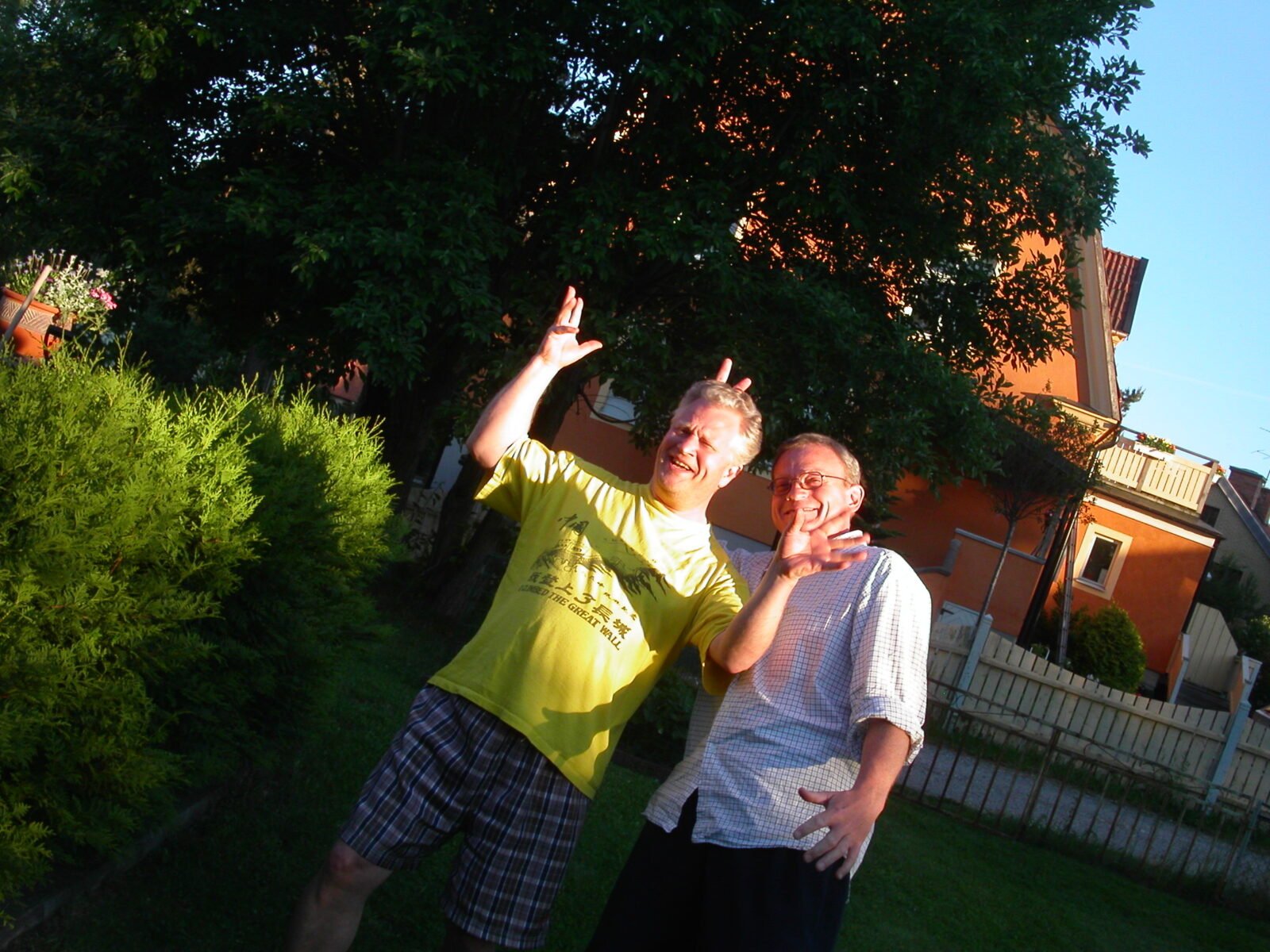
Since you’re from Sweden, were you aware of bands like Pärson Sound?
Both yes and no. I had read about their existence, their playing with Terry Riley and other activities at Museum of Modern Art in Stockholm circa 1968, but never heard them until their music was properly released for the first time in 2001. But, International Harvester/Harvester/Träd Gräs Och Stenar (= the bands that followed after Pärson Sound with mainly the same members) belonged to favourites from the late 60s and on and then it was easy to love Pärson Sound as well when their music were made available. There was a big left-winged movement in Sweden from late 60s and on with a lot of interesting bands of which I mostly liked the ones focused on instrumental music (Älgarnas Trädgård, Fläsket Brinner, Kebnekaise, Samla Mammas Manna, Arbete & Fritid also a lot of jazz/early free jazz/impro bands like Mount Everest, Iskra (Swedish) et cetera). Instrumental music can be as political as sung, you know, sometimes even more.
Trivia: On Träd Gräs Och Stenar’s 2002 album ‘Ajn Schwajn Draj’ there are some drumming that really knocked me, especially on the track ‘Ringring’, where Thomas Mera Gartz’ drums go from mid-tempo to fluid techno/rave pulse. It swings like hell. It really floored me. I reached out to Thomas for some contributions which he immediately agreed to, he liked what he had heard of our music. But, his drum kit was in Träd Gräs Och Stenar’s rehearsal space far from where he lived and he said he had no recording equipment there. He said he was working a lot with drums programming, and he offered to add such stuff to some of our tracks. Specifically, the two I had in mind would work fine with programmed drums, like almost all our music would. A few weeks later he did send the files and they were really fitting well. A while after he came back to me, said the programs he used were taken from the internet and he wasn’t sure how legal/illegal it was and didn’t want to risqué any trouble with the makers of the programs unless we were willing to help him by buying them for him. We couldn’t afford it and unfortunately had to cancel his participation. No hard feelings from any of us. Janne constructed some drum patterns inspired by Träd Gräs Och Stenar’s which were used.
Four or five years later, in early spring 2012, I found the recorded files again, though it would have been nice at least to upload them as SoundCloud files. I contacted Thomas again, asked for his consent, and this time there were no problems at all, he had bought the program himself, everything was legal. I asked him what he thought of making a new collaboration? He was positive and I sent an email with some thoughts about this. I didn’t receive any answer to this and shortly after I could read in the papers that he had died. Really sad. Both tracks with his programmed drums ended up on ‘Abstract & Concrete’, 2020.
What I find very fascinating is that you also started your own little DIY label, Tin Can Music. There you’re releasing Joxfield, Joxfield ProjeX, Ambient DarkWhite, ADW and related music. That gives you complete freedom, doesn’t it?
Having an own label for us was at the beginning in 2005 just a reason to make things looking good, feeling well, something to put on the cover of an album. It was just a name coming up on a restaurant, like a joke, the tin can box where you put the bills from restaurants for our accountant to deal with. We’ve never had any accountant, always paid for ourselves. But it was a good name, so we kept it.
And, of course, it gives you complete freedom. I absolutely don’t want to downgrade the music we do, many times I think it’s excellent, but nevertheless it lacks commercial potential. Not only because of its variety/diversity, you cannot label it into any specific genre without having to re-do the job next time we release anything, but also, it’s made by two old bums, in two years we’re turning 70, not the best age for starting a global career.
So, the freedom for us, with Tin Can Music, is that we can release whatever we want, whenever we want, no matter if it’s physical or digital. All the decisions are ours.
I would have loved to have a proper, decent label backing us, with full artistic freedom, with us still being able to make all decisions regarding releases, LPs, CDs or whatever. But that doesn’t exist.
We have approached labels with our music over the years, both with bad experiences, wanting us to pay a lot and also losing the rights to our music, which we didn’t agree to, and they were really pissed.
But we also have had very good experiences with a couple of labels like with French Bam Balam Records, run by JJ Arnould who owns a record store and a label as well. Simple and distinct deals, no hidden agenda.
The defunct, Italian label Santos Production were also very easy and straight to deal with and released two CD-r with Joxfield and the only Ambient DarkWhite album so far, a 3 CD-r box set. Same deal, we get parts of the edition, the label the rest.
That’s how I would love to release/re-release our music in the future; we send the music and cover art, if wanted, and the label print and are responsible for promotion, sending the music to reviewers, and so on. We get copies, they keep the rest for expenses. Then we can concentrate on the creative part of making music. So, when It’s Psychedelic Baby! Magazine properly want to develop your label so you know what artists to contact first.
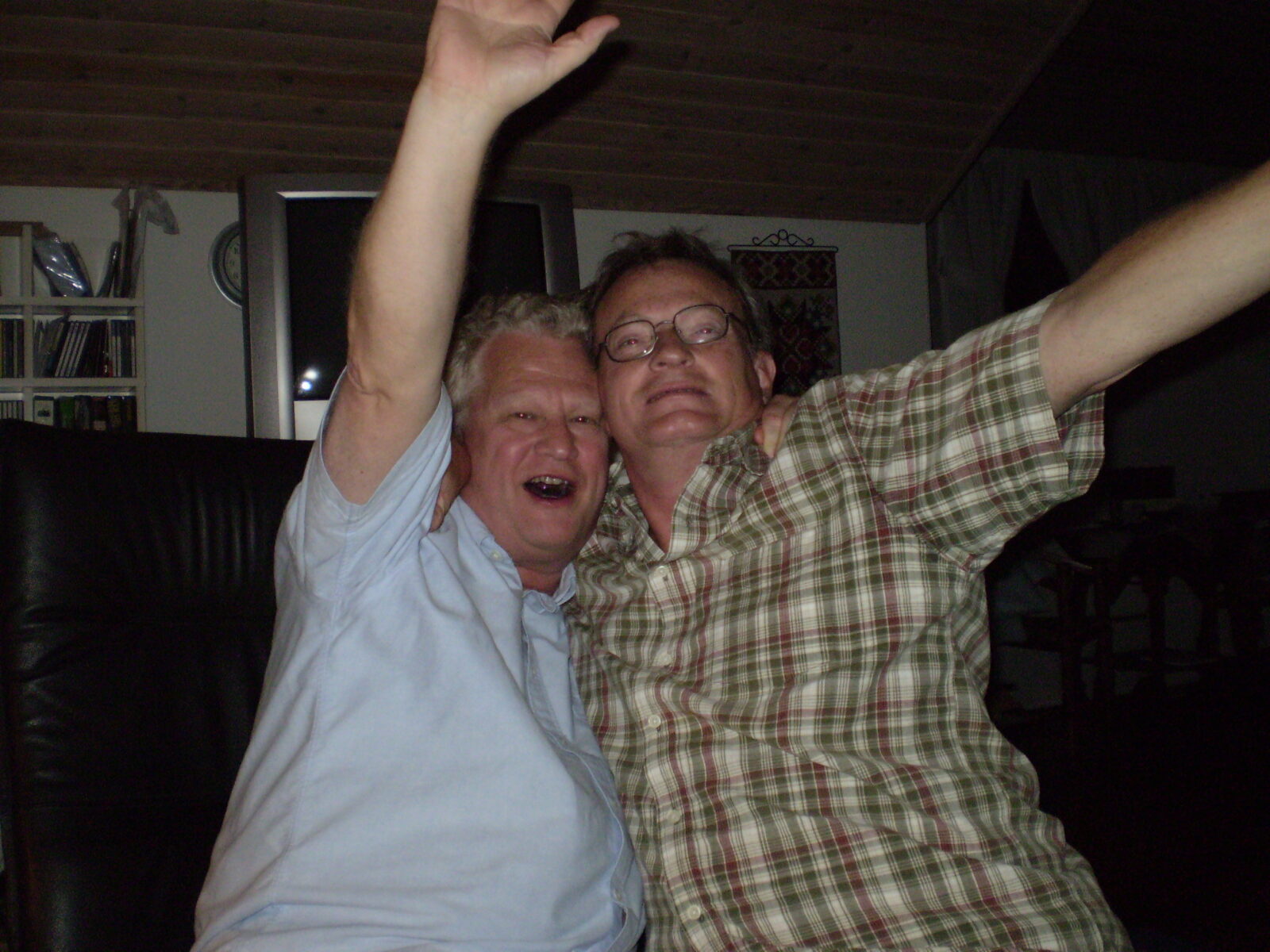
Which albums would you highlight when it comes to Joxfield Projex?
That’s a question for sure, but here’s a try:
‘Bits & Pieces’ (Tin Can Music/Clinical Archives 2009).
An odd album, a distinct idea of making short songs with sampled/cut-up authors voices, some other sounds, the guitar played unconventionally, by hitting, shaking, and rubbing it, creating off-strings sounds, and it is still music.
‘Numbers & Letters’ (Tin Can Music/Clinical Archives 2010) + its 10th anniversary accompanying set ‘Abstract & Concrete’ (Tin Can Music 2020).
Because of its huge variety, complexity, structure of melodies, beats and sounds. Maybe “The White Album” by Joxfield.
‘Shimmering Mah No1’, (Tin Can Music/Clinical Archives 2009).
Because it’s not only good music, but it also shows Janne’s genius ability to put things together into great music.
‘VoxLuxRabax’ (Tin Can Music2011).
Because of its harsh, raw energy, it’s good improvisations to well-prepared patterns.
‘Invasion of the Living’ (Santos Productions2013).
Because it’s our most ambient album so far, and it works really well in my ears.
‘Casino Royal’ (LP Bam Balam 2015).
Because even though it’s dystrophic and dull,the collaboration with Cotton Casino, who wrote and sung all melodies heard, makes me happy. Makoto Kawabata also guests on one track.
‘Red to Red’ (LP Bam Balam 2016).
Because it was fruitful and nice to consequently add another instrumentalist into one of our albums, like alto sax wizard Ryoko Ono. All the music was recorded by Janne and me and we were willing to release it when I heard something played by Ryoko and said to Janne that her sax would be nice to play. I contacted her, sent our music, she thought it was beautiful and wanted to add what you now hear on it.
‘Red White Black & Pale’ CD on TCM 2020.
Because it’s one of our most ambitious and elaborated albums ever, produced between 2016 – 2020 under the directorship of Janne. From the start meant four “sidelong” suits running for about 20 minutes each. When finished there was some 96 or 97 minutes of music which we later reduced to 55. And finally, right before Covid lockdown we had the release of a beautiful, professionally printed CD.
“I think it all comes out of improvisations”
How do you usually approach music making and how important is improvisation? Do you do any local shows?
Improvisation has always been important to us, in different ways. No matter if we do stuff together or sit alone in our own chambers and make music, I think it always starts with some basic structures to which we improvise. Generally, I think it all comes out of improvisations.
But to play live? In 2017 and 2018 we decided to explore the live situation a bit. Could the two of us perform together in a way that could be interesting for others to hear, something that can be identifiable as Joxfield music. During these two years we worked with different kinds of preparations we played with, played to, explored the field, during weeklong sessions somewhere. Some structures worked better than others and I think it went better after time, but still a bit left to reach any goal as “live artists”. We’re not the kind of people that like to rehearse a tune and then perform it the same time after time. We would immediately be bored. There must be a lot of elements in it that can change.
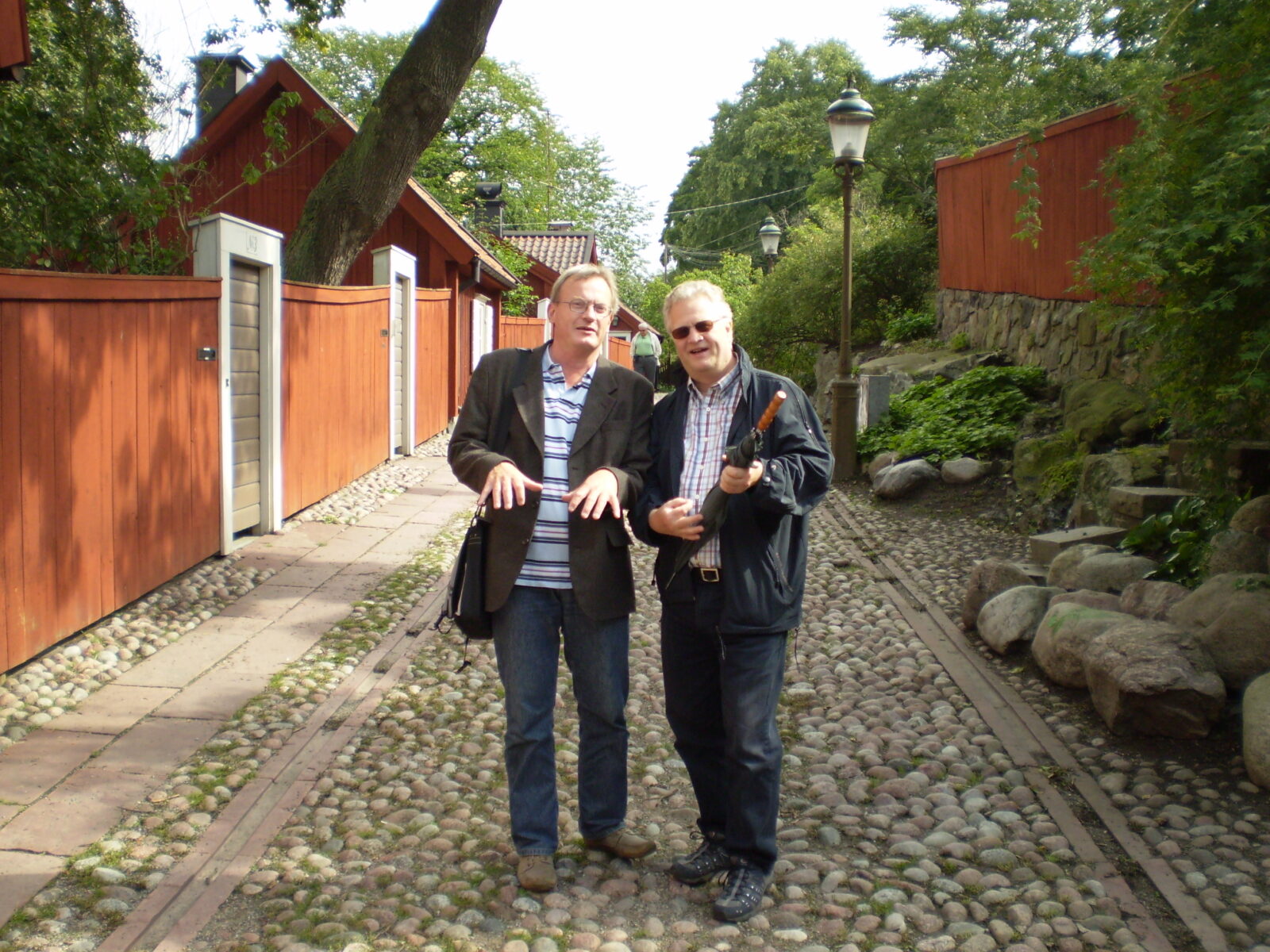
Maybe the live exploration project ran out of steam, but it’s not finished yet, we still don’t know if we ever could make a good performance as a duo.
During these sessions the goal was never to make an album of it, even though we recorded everything we played. In July 2017 we played the same tune for four days to find out how we developed as players and how the tune developed through its different versions. Some of the recordings were edited to a one-hour suite and released as ‘Live Joxfield Vol. 1’ last year. The drums were modified for the album release, otherwise everything sounds as it did when recorded. I called it futuristic folk music for some reason.
You are working on several other projects, including my favourite lately, Etherwink & Larwott. Would you like to tell what’s different in this project?
Two years ago, we decided to skip the “ProjeX” part of the name. We also decided to use Tin Can Music Bandcamp site as a platform for music we made, together or alone. A platform for creativity.
The Etherwink & Larwottname consists of an anagram I’ve never used before, combined with an alias Janne used in the 60s. The music came out of an idea I had about making some simple music, very slow tunes (60 bpm) with just one or two chords and some environmental samples added. Inspired by some weird, folk music. The recordings should be made quickly as well as the postproduction, all in about a week and it all with DIY sound-picture. To include Janne (because of using his old alias) I took parts or small fragments from unused, old Janne-files and transformed them and added some of them into some of the songs. ‘Lägereldsmusik/Campfire Music’ was made. The recording of that album immediately inspired me to make the second E&L album, and the third and fourth, then I felt emptied and took a break from the concept. The four albums were recorded between December 2020 – February 2021. To not overflow I released them two and two with a month in between, as both digital releases and physical (sold via Discreet Music). Good reviews in Wire and good sales (for being us). Almost all the songs had been slightly composed, sketches/ideas written down and used as a starting point when recording, even though they often changed little or a lot during the process. From March to September, I gathered notes for a last recording within this, now slightly changed concept which I did in September 2021, the 2CDr “En Knytnäve Genom Tystnaden/A Fist Through Silence”. For the moment I’m satisfied with these 5 albums which doesn’t mean I can’t return to E&L sometime in the future, but it’s good for now.
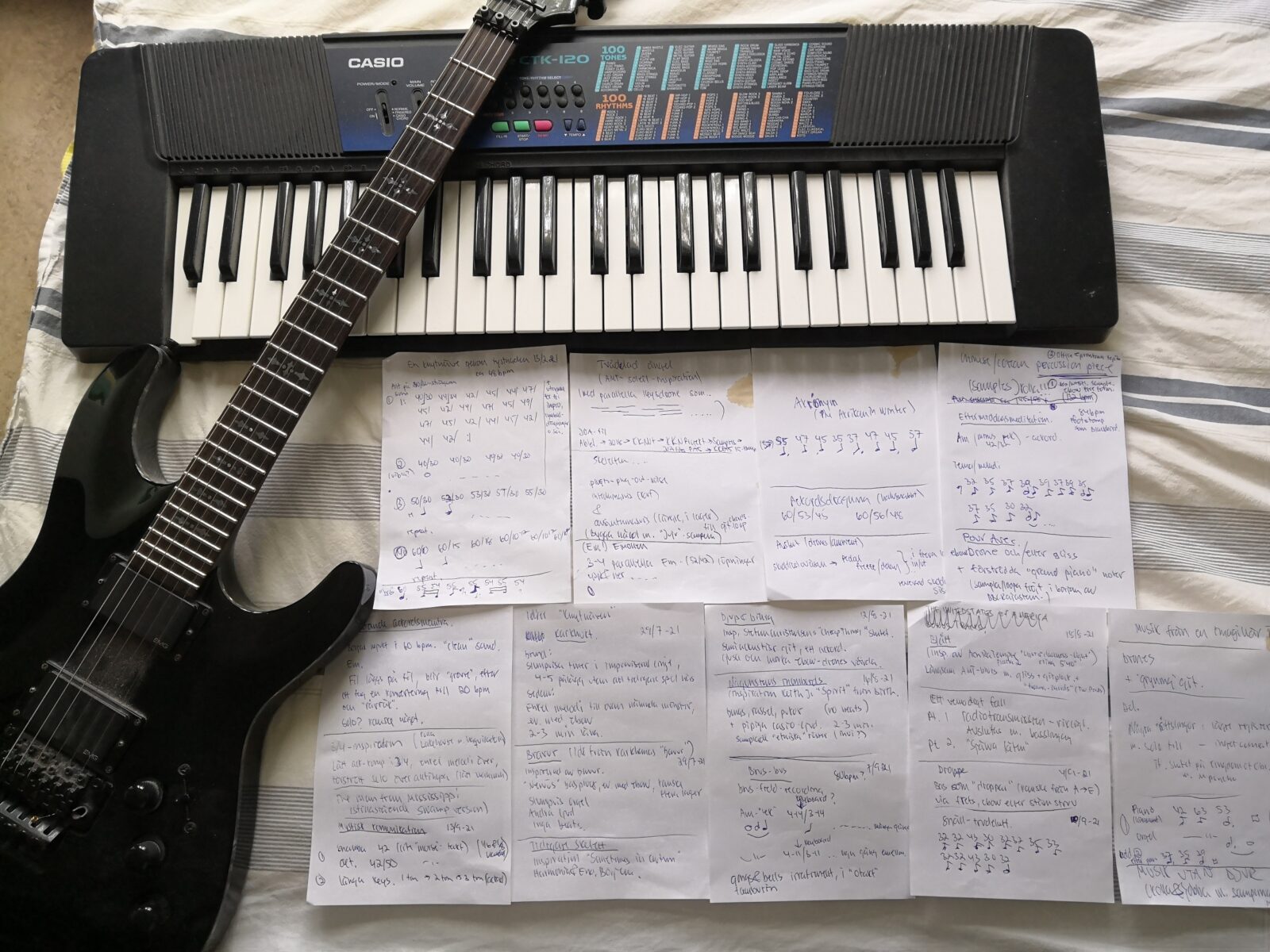
Have you ideas that refuse to step through the door with you? And what do you do with those sketches?
I’m not sure we have. The “live” situation maybe was one, we have explored it and I don’t think the result lived up to expectations of what to get out of it. I don’t know if it’s finished or if we will return to it. One thing I think would have been very interesting would have been to gather some 5 – 10 musicians we know, get helped to arrange stuff and see it performed by other, much more skilled people than us. We could sit in the audience, drink beer, and enjoy ourselves. There is potential in a lot of the music we’ve made, a complexity we can’t handle ourselves on a stage. I think Joxfield would have been very electric. I also would have liked to do the same thing for Etherwink & Larwott, but I think it would have been an acoustic approach to the music here.
A lot of musicians dream of making a movie soundtrack. Maybe that would have been nice. We often hear from people that our music makes them see pictures when hearing it, and that’s interesting. Maybe we should do a soundtrack one day, something epic and dramatic.
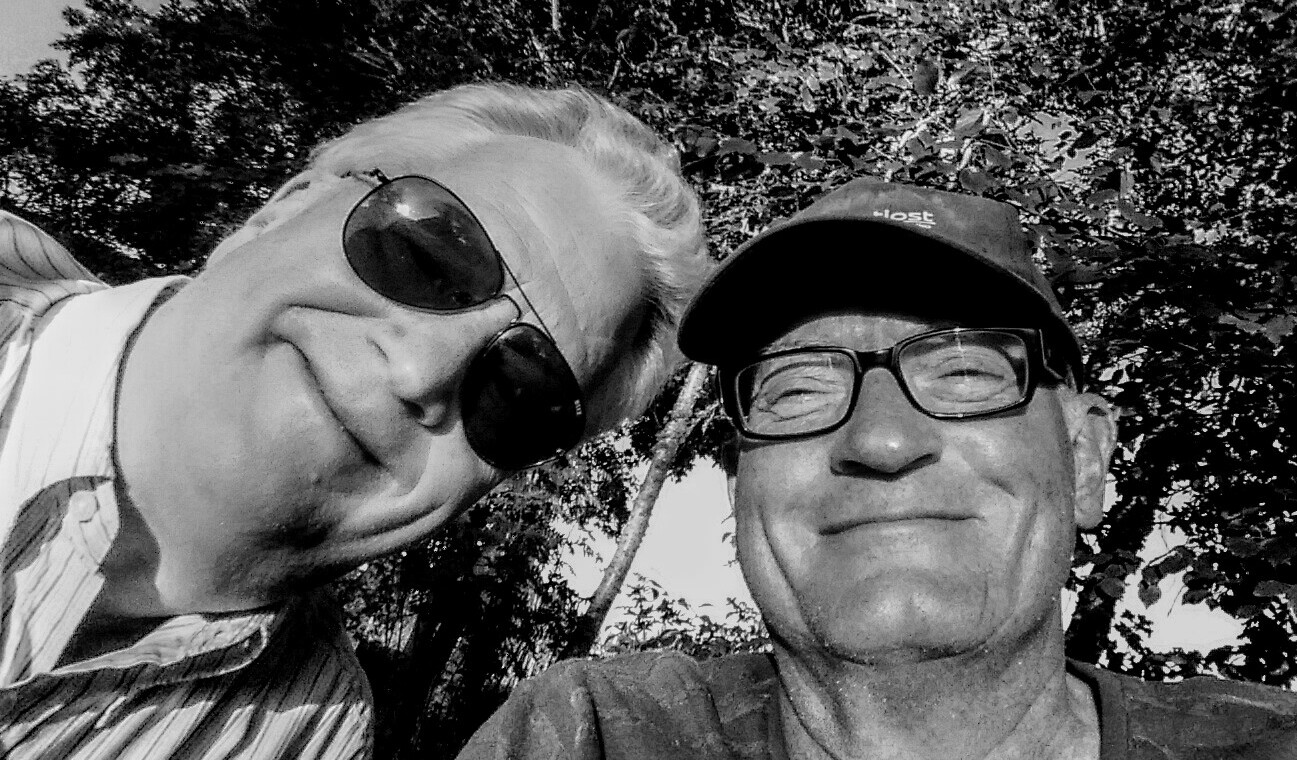
Over the years some of our music has been used in short films, inspired by videos and a Japanese on-line game. Some of it has been sampled and remixed. I love the idea of people being inspired to do something creative with our music.
I think Janne wants to write a symphony? Maybe I should learn how to play the piano properly. If we’re healthy I think we have a lot more to give. Maybe a world tour before we are 80?
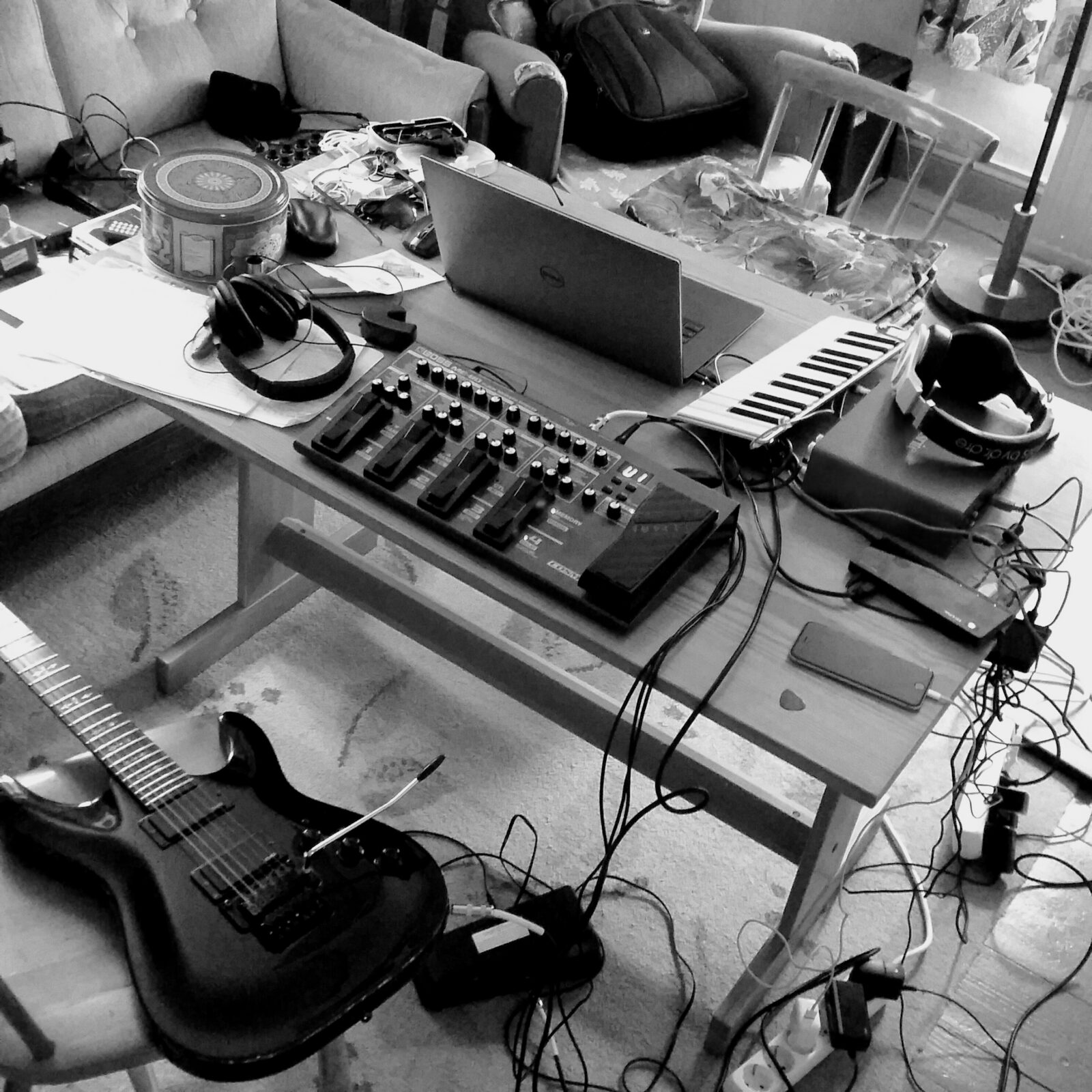
The last project you uploaded on Bandcamp is called The Global Researchers.
It’s Janne’s project, and as I said he’s a technical guy with a brilliant mind. I asked him to clarify The Global Research (TGR) project and he responded:
The short version is it “Investigates the impact of chance on music”
Or more correctly: “TGR is part of Exploring Randomness (the Initiative) where I investigate how chance combined with editing / composition can change / improve the music. TGR uses (currently) a small amount of randomness (maybe 20%) mainly with probabilistic notes and random voices. This explains the term “Research”. The term Global refers to the fact that they are not limited (in principle) to any specific genre or geographical delimitation (rather by the ability of practitioners). Part of other “research” in Exploring Randomness covers areas such as generating melodies via AI, Markov Processes, and other discrete random processes where you control the probability of increasing / decreasing the note height. Random rhythms are also part of this, where for example Pseudo Random Sequences, Euclidean Sequences and Poisson processes are used to create rhythm patterns. Chords within the Circle of Fifth and linked Circle of Fifths are also included, as well as non-Euclidean distances between chords. It should be added that this is mainly for research in music, and it is not given that everything will result in works that are published. In an upcoming “ambient” album, however, a few small steps are taken forward (by an artist other than TGR)”.
How have you been coping with the COVID and the lockdown?
We’re both retired from our daytime job, and don’t have to spend time with other people except family. We’re fully vaccinated and still we’ve been hit by Omikron as everybody else, just like a half-mean cold. I live on my own these days and am used to meeting friends in a bar, or watching a lot of music live, which over time has been radically reduced, but hopefully will get better soon. Sweden opened up after Covid just a couple of weeks ago, the live scene starts to wake up, let’s see if it’s forever or just for a short moment.
What else are you working on?
After finishing the E&L project, so far, it felt good not to be involved in the making of new music for a while, let the creative senses rest. Nevertheless, there is a lot of music recorded over the last years that’s been gathered into albums and now are waiting to be released this upcoming year.
First out is a new Joxfield album, ‘Colvolved’ on a British cassette label, Vohu Manah. It’s mainly an ambient album, but also with some new approaches to music like a graphic score I wrote for Janne to interpret. The same label will release a yet untitled cassette compilation by Etherwink & Larwott.
Tin Can Music will release 2 x CD-r JANNE (JNNE), ‘Primo Secondo’ and ‘Terzo Quarto’, mostly electronic stuff he has recorded, also including some treated guitar parts from me.
There will also be an EP by The Jane Henry Experience, ‘Lovesongs & Death’, five pop-like songs recorded some years ago as a part of a now defunct project. The title track, ‘Love Is Always Waiting For You’ was originally a one-chord 30 minutes improvisation we recorded in summer 1970 repeatedly singing the title words hundreds of times. Here’s an interpretation including bombastic guitar solos and vocals by the mighty Dan Söderqvist (Älgarnas Trädgård, Twice A Man). Five tracks, 21 minutes.
I plan to release the second album as Henry Etherwink, titled ‘7 z’ or ‘An Overground Psychotic Experience with A Sacred Camel’, a somewhat challenging guitar-noise album, solo, even though there is a loop of a short, fragmented sample of some annoying seconds by Janne. No matter what we do, in one way or another we always seem to be involved in each other’s music.
Janne’s working on an ambient album, maybe titled ‘Rituals by Statues’ which hopefully will be released within a year. I’m also curating an album of his, maybe titled ‘October Mist’ to be released this year.
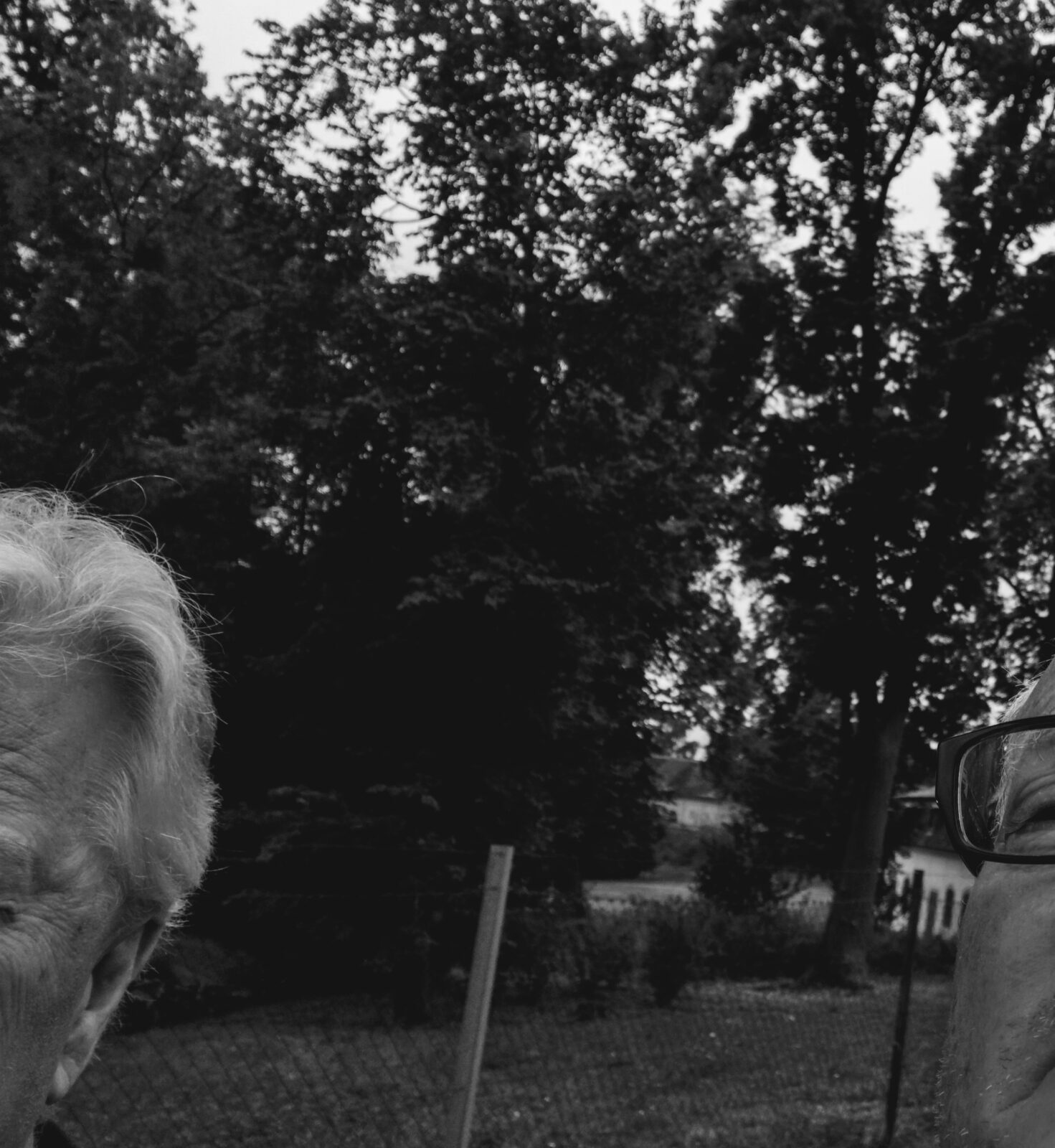
Let’s end this interview with some of your favorite albums. Have you found something new lately you would like to recommend to our readers?
I have always seen it as a privilege to have the ability to appreciate others’ music, not copy, but to be inspired by it and sometimes use traces of it in what you do yourself. I always listen to music, I love hearing new music, and by this, I mean music that is new to me, no matter if it’s done yesterday or decades ago. If I hear or read about anything that seems interesting, I try to check up and most often I find it somewhere.
There are two artists I think have been, and still are, the most influential to my aural life for the last 20 – 25 years. What unites them is that they are extremely creative and productive, there are hundreds of records to listen to, they work solo, and they are also involved in a huge number of groups/constellations/circumstances, they never rest, they constantly develop both as musicians and the music they are involved in. I’ve seen them live uncountable times and never been left untouched.
The first is Swedish saxophone/electronics wizard Mats Gustafsson who I’ve been following since circa 1996 when I coincidentally heard him and immediately were floored.
The other is Makoto Kawabato from Japan, mostly connected to Acid Mothers Temple, but there is sooooo much more.
A third artist I can’t avoid is Daevid Allen, mostly connected to Gong, but there are a couple of hundred of albums of various kinds, some easier to get than others, and even though he sadly passed a few years ago he’s one of the most influential artists in my life ever since the 70s.
I also like to mention what happens in Gothenburg these days, with the core of Discreet Music, a record store run since a couple of years by two guys, Gustaf Dicksson and Matthias Andersson where they sell mostly new, experimental/jazz/freejazz/folk/noise LPs, but also with decent second hand albums. Not only interesting artists themselves, but they also run a couple of labels; Discreet Music, lo-fi label Förlag För Fri Music and the CDr label Förfall. Not only this, but Matthias also runs the reissue label Fördämning (mainly music from New Zealand) and the exclusive 7” label I Dischi Del Barone. All in all, this has made them the best music center for interesting, alternative music in Sweden for many years. You can hear some of it here.
Other artists I’ve listened to the last year/s and recommend anyone to check up:
Mary Ocher, Damon Locks & Black Monument Ensemble, Circuit des Yeux, Aldous Harding, Endless Boogie, Kuunatic, Barney Wilen, Karkhana, Konstrukt, Headroom, Lama Lobsang Palden & Jim Becker, Natural Information Society, DJINN, Laughing Eye, Dharma Quintet, Cohelmet Ensemble…
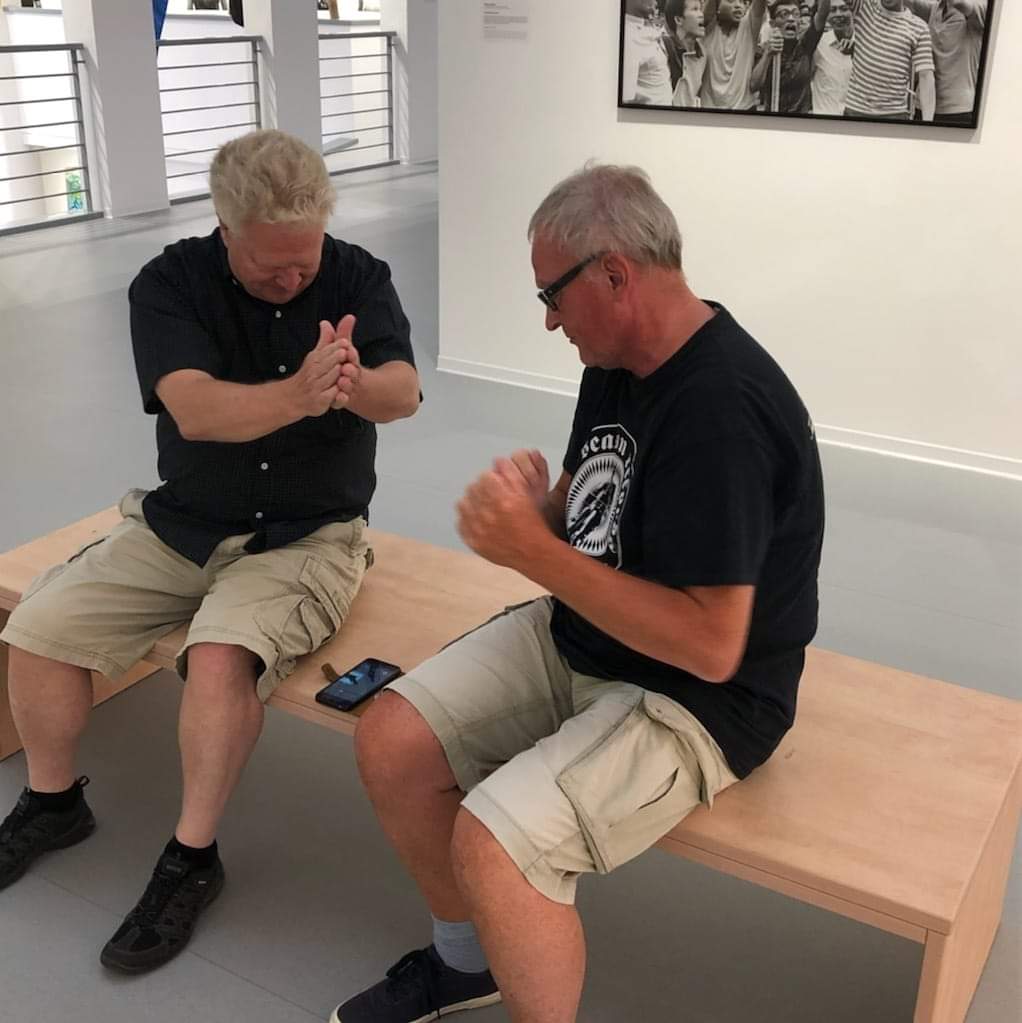
Thank you. Last word is yours.
You can’t be serious after all these… I don’t know… thousands of words. I think you really regret saying you “love loooong stories”. Instead of more words I think you deserve some rest now.
Sometimes answers just bring out more questions, so if you think you haven’t got enough from me and want to clear some things out, be kind and come back to me. It’s a bit narcissistic sitting here with a mental mirror watching yourself all the time, but it’s also a lot of fun.
Klemen Breznikar
Headline photo: Janne Yan Andersson and Stefan Ek in 1968
Joxfield Projex Official Website
Tin Can Music Facebook / Bandcamp

